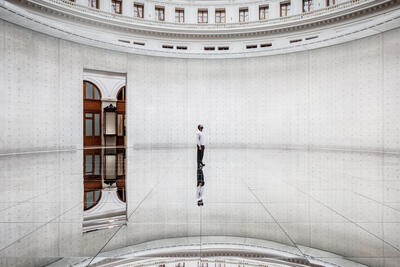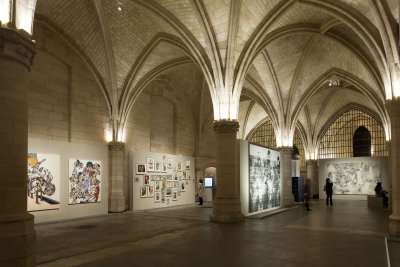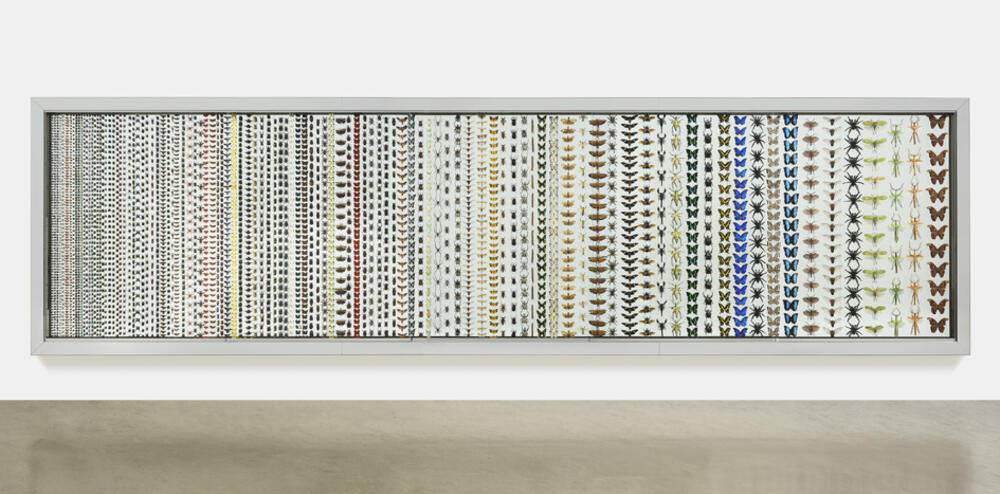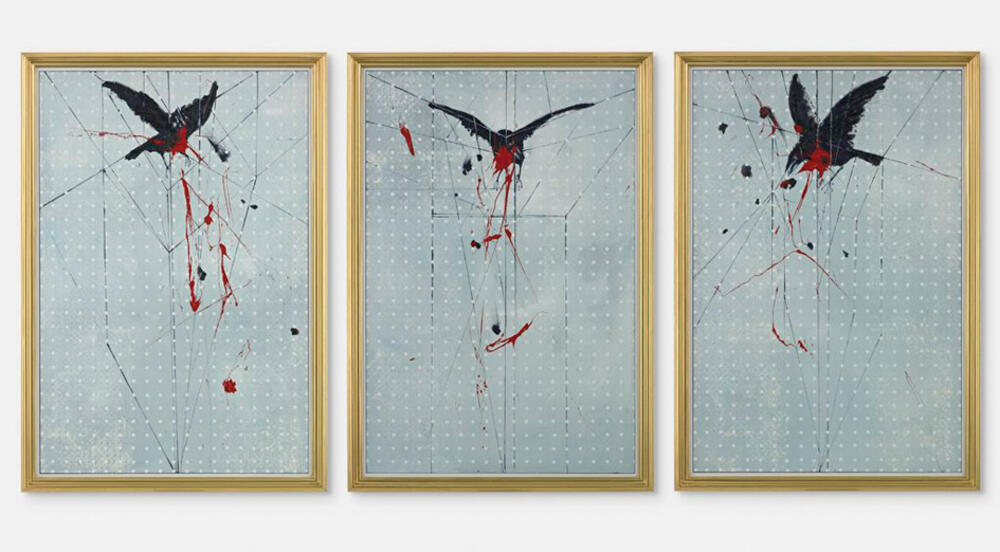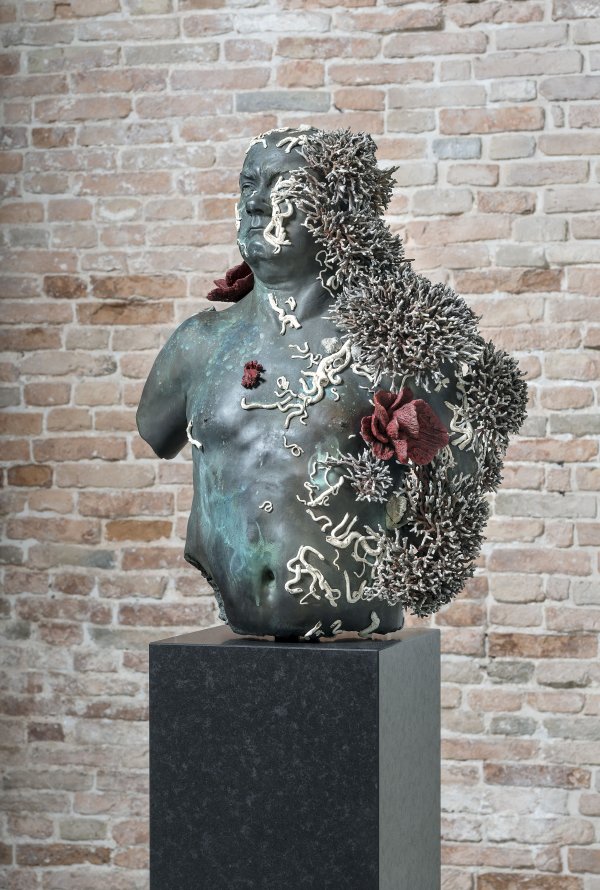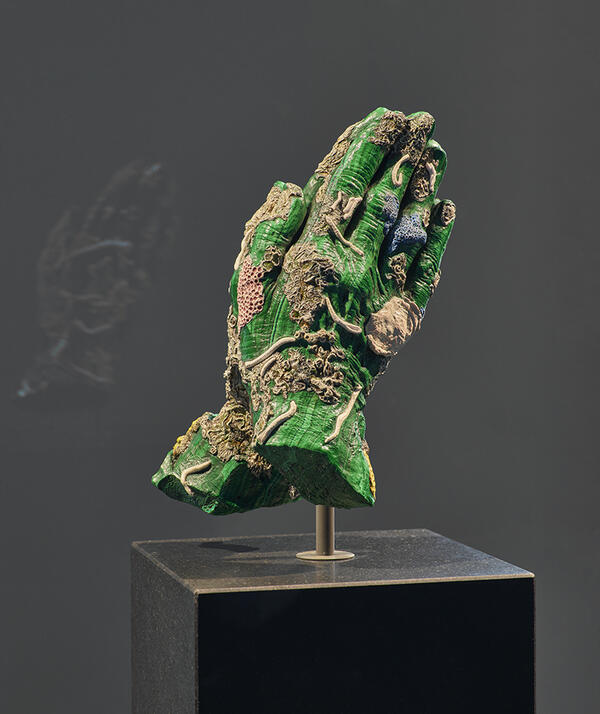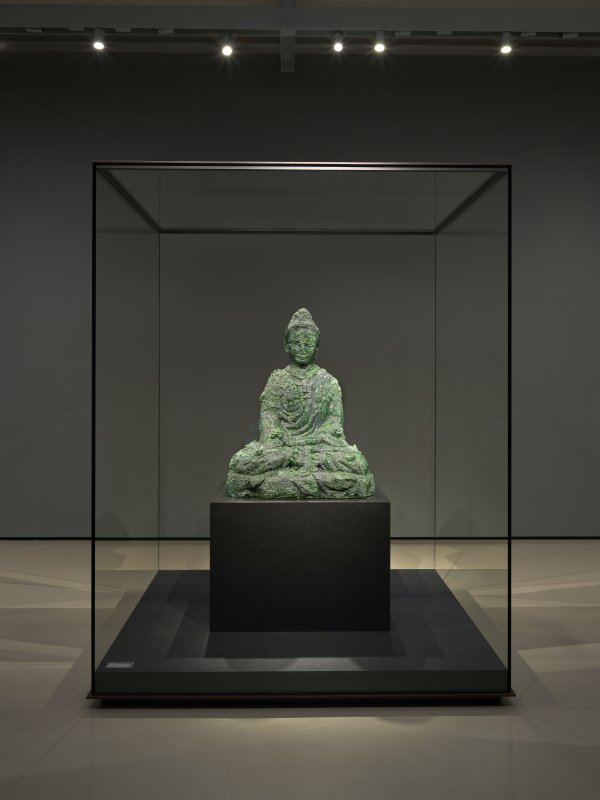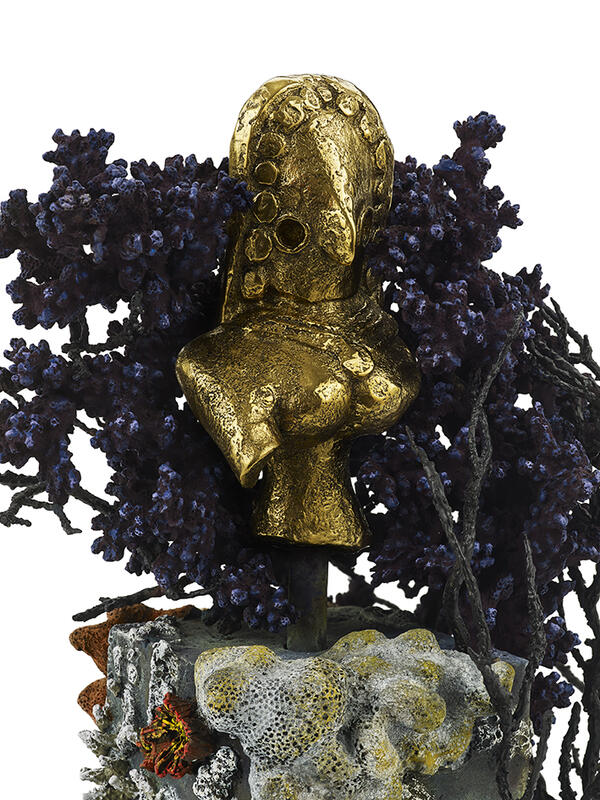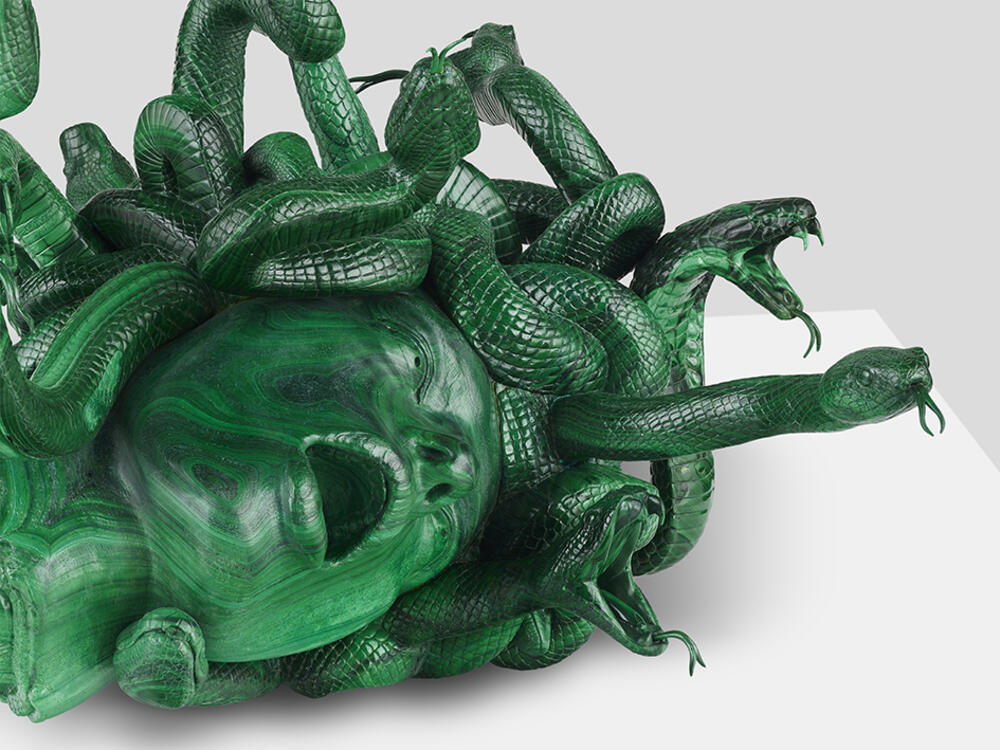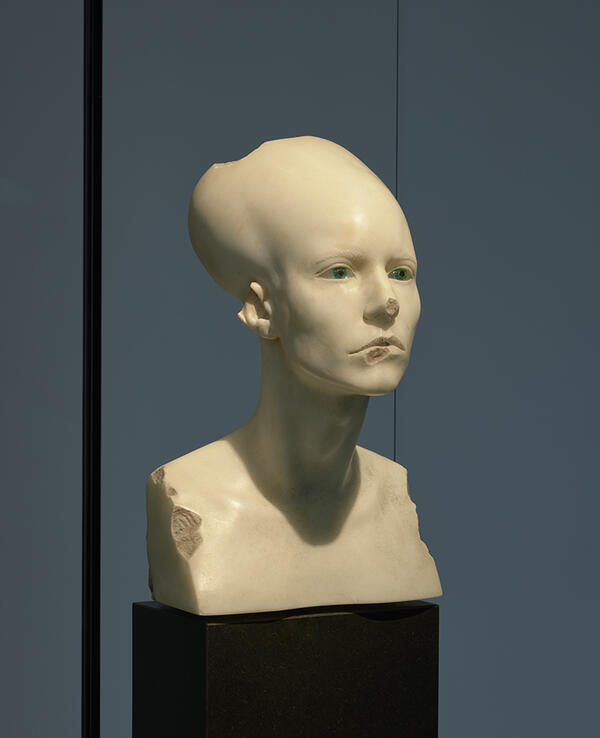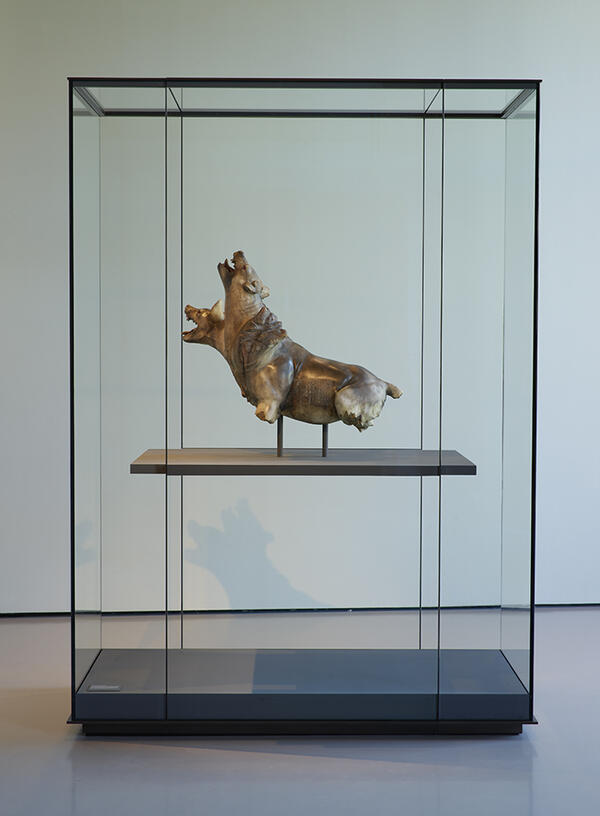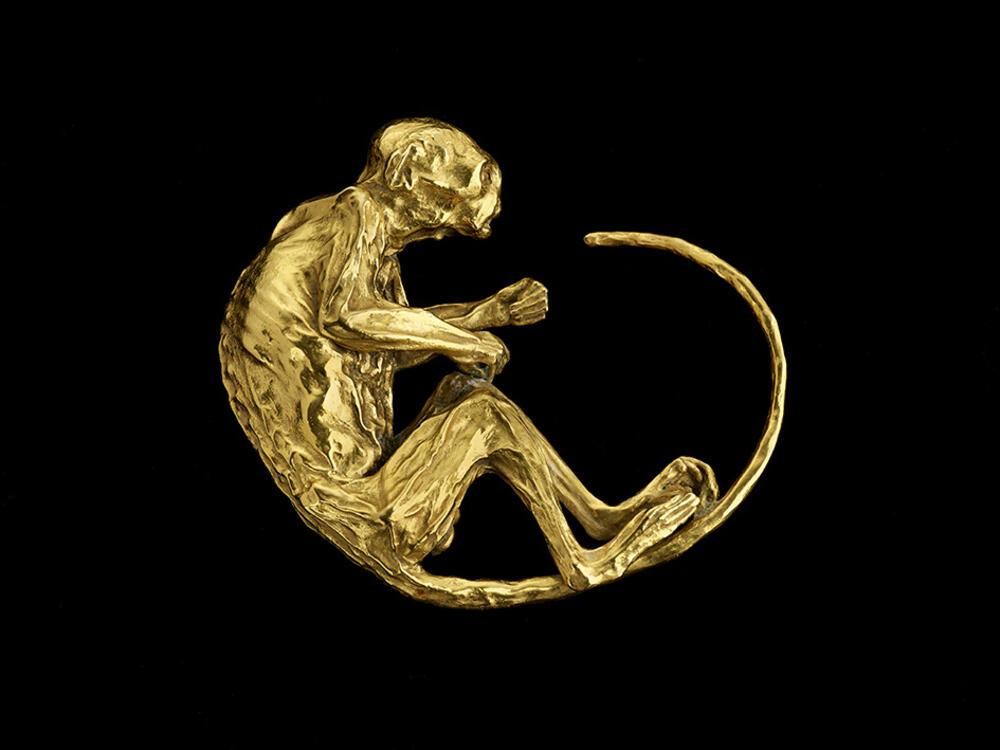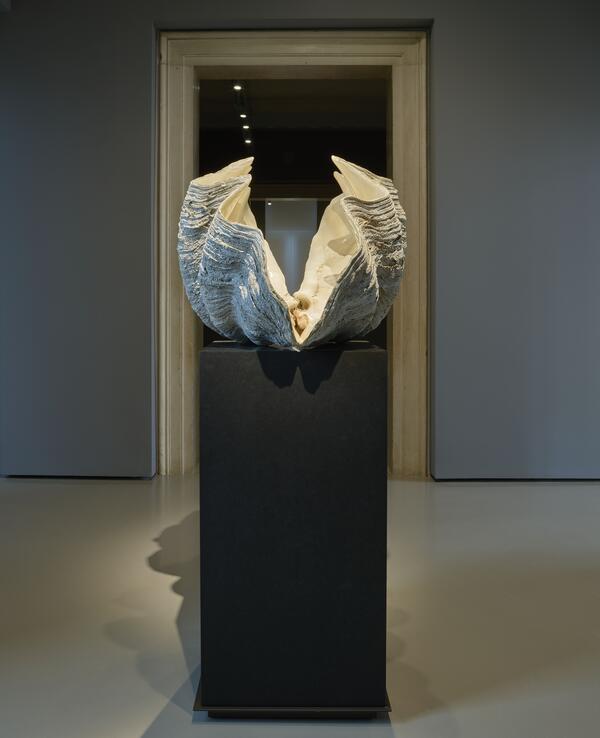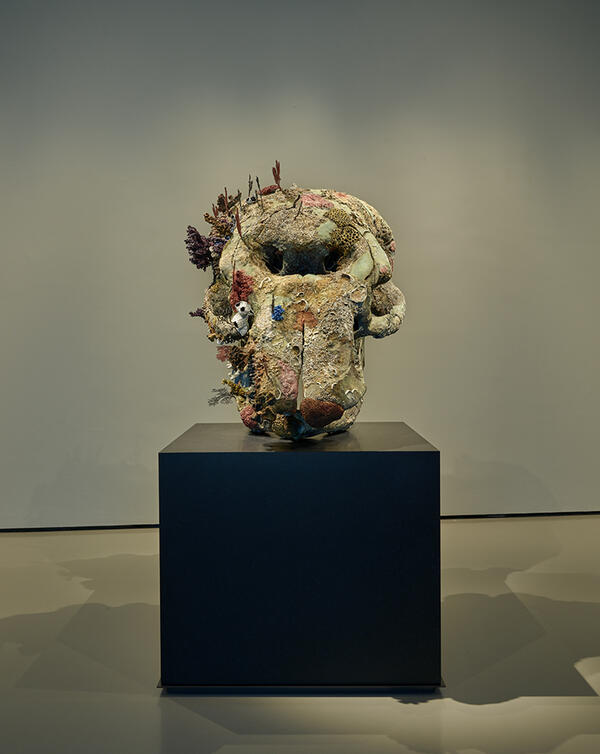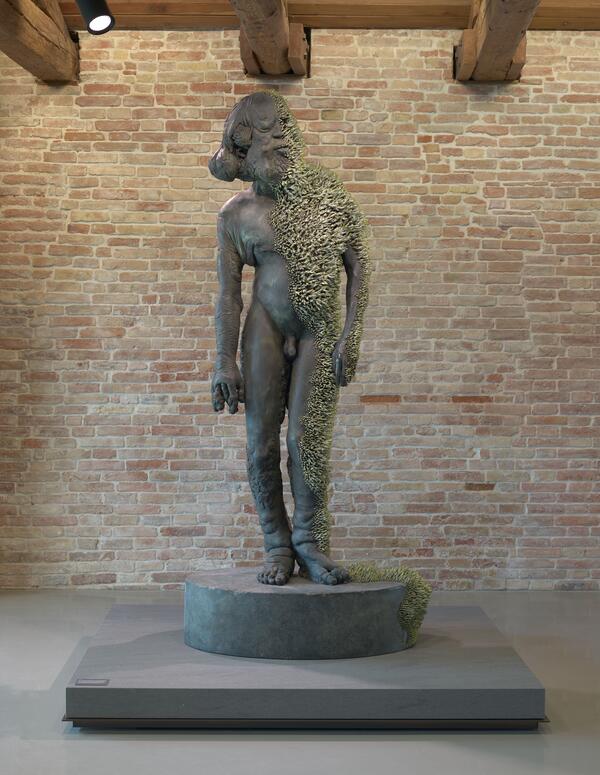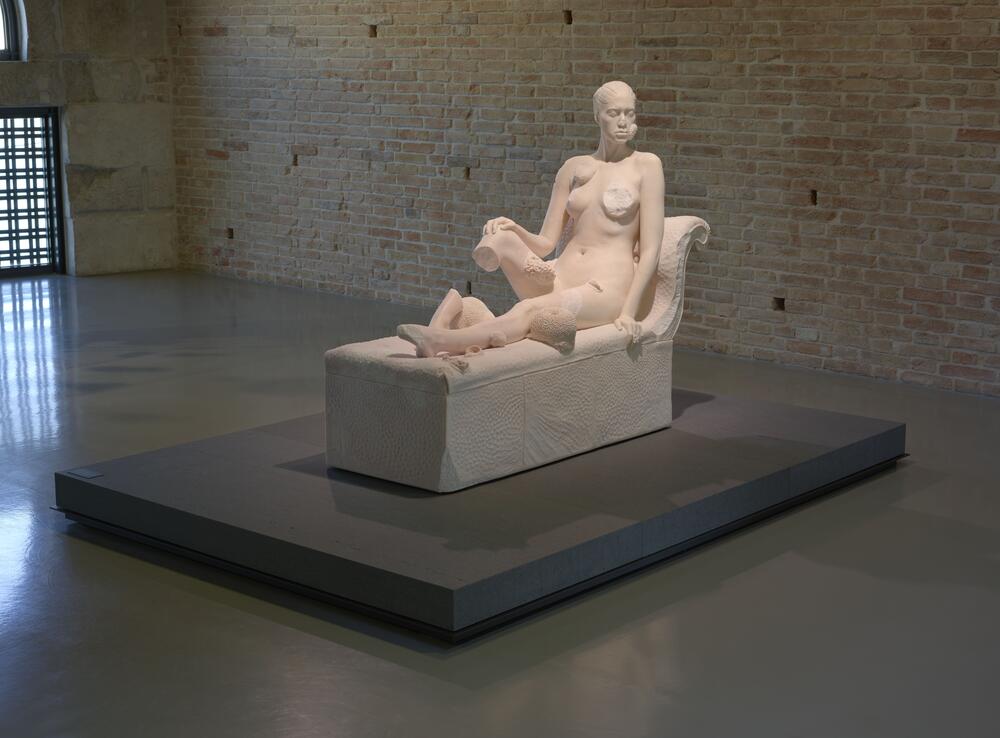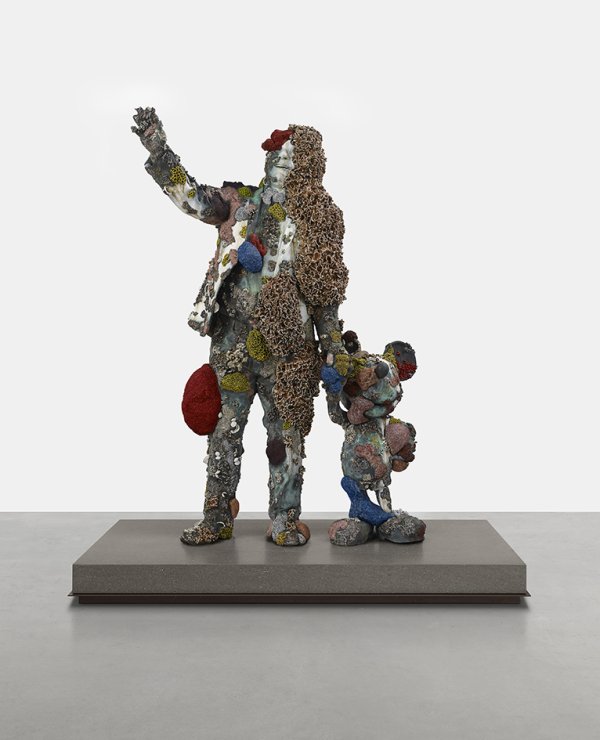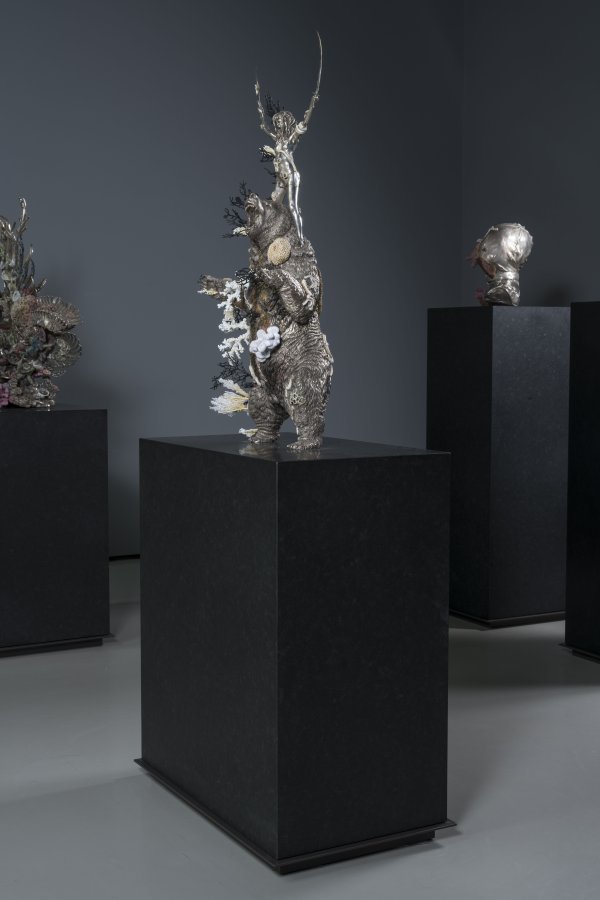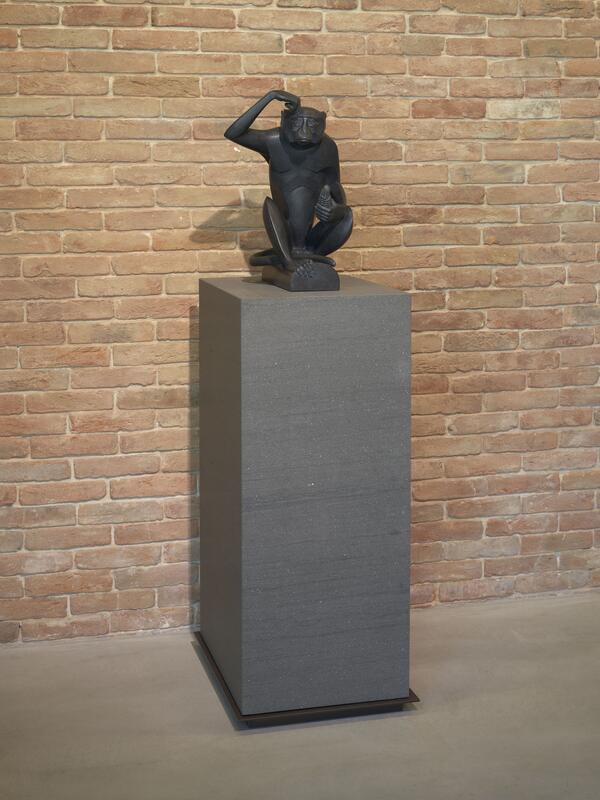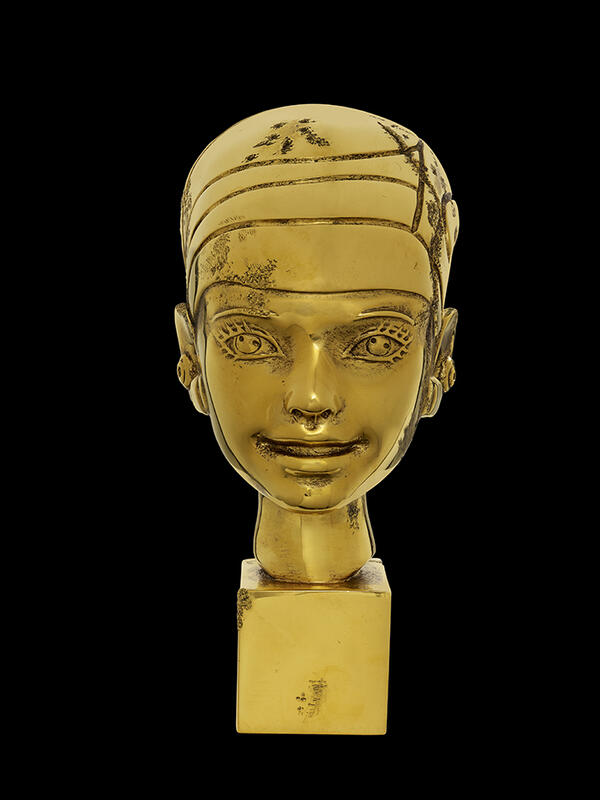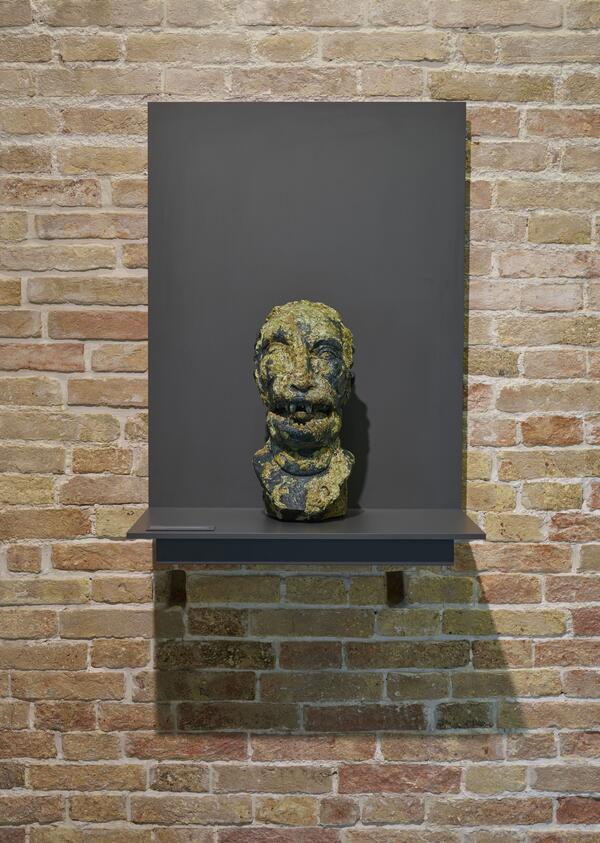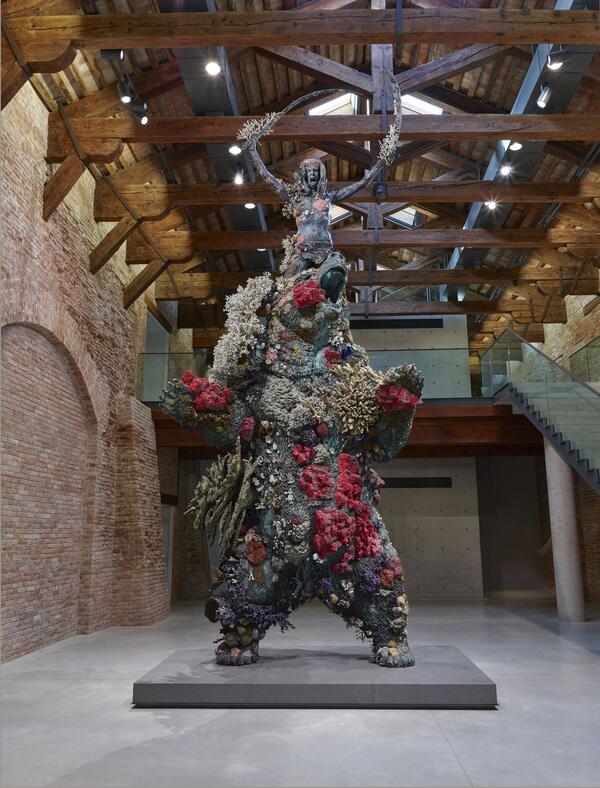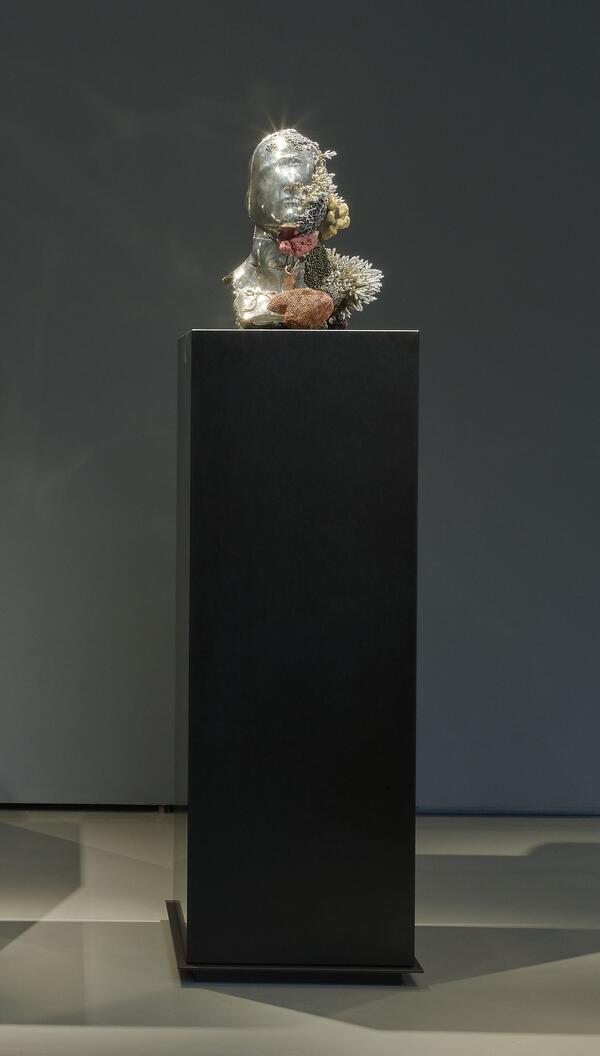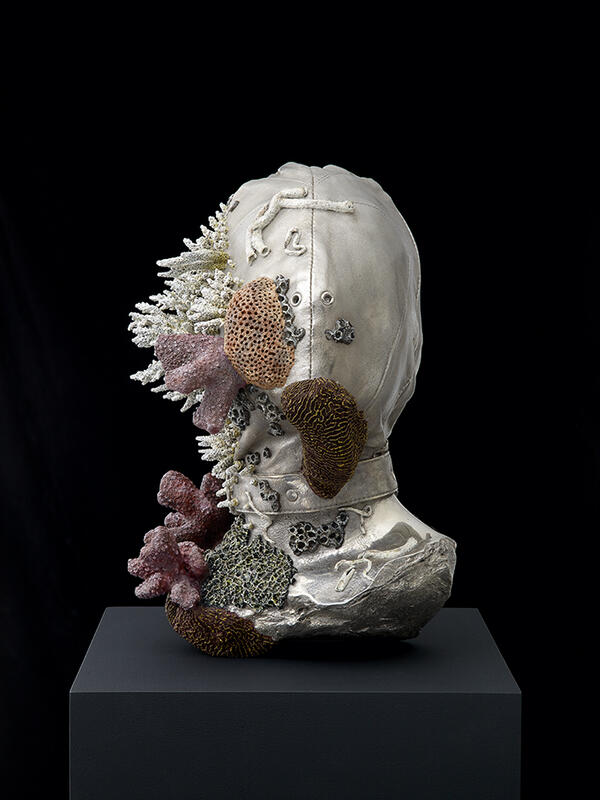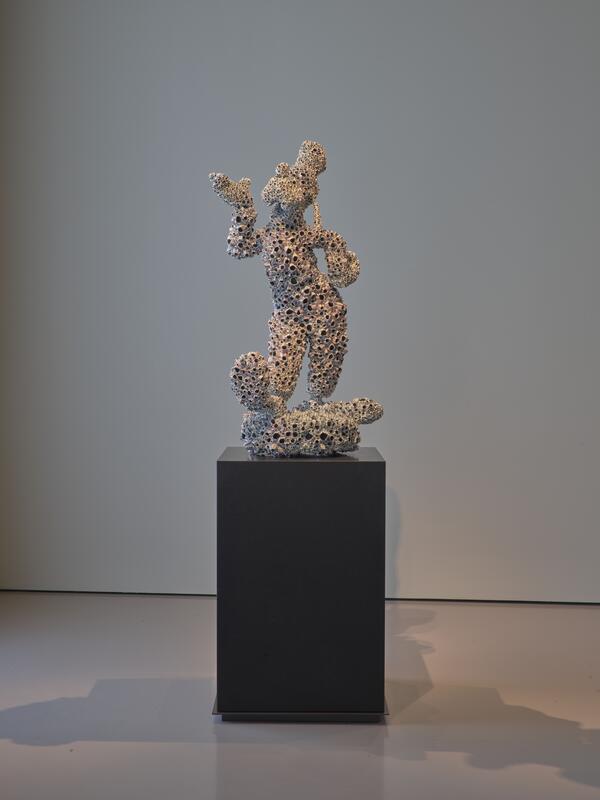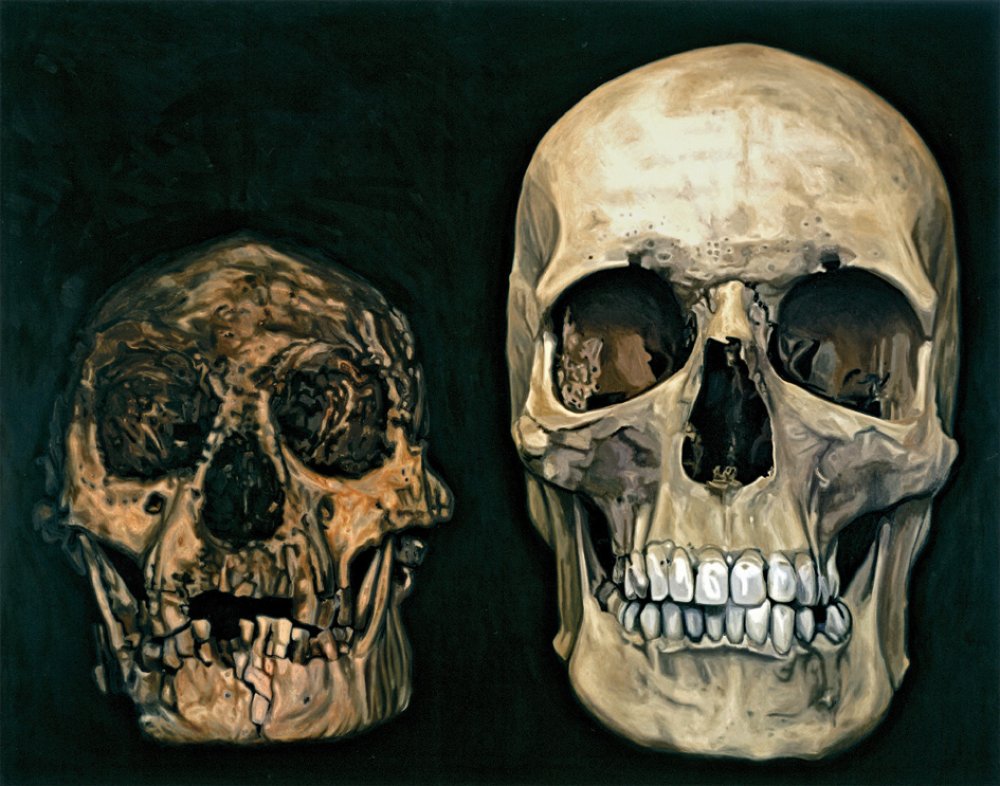The Fragile Truth
1997-1998
Glass, stainless steel and drug packaging
250 x 368 x 25.8 cm (98 7/16 x 144 7/8 x 10 3/16 in.)
A giant medicine cabinet displays rows upon rows of medicine boxes. A symbol of man's fight against death, The Fragile Truth appears as a vanity, both as a composition about the inevitability of death and as an immodest show of defiance in the face of destiny. “You can only cure people for so long and then they’re going to die anyway. You can’t arrest decay but these medicine cabinets suggest you can,” said the artist.
Damien Hirst starts in the late 1980s to make a series of medicine shelves in the vein of instrument cabinets. Akin to curiosity cabinets, they highlight that the power of the pharmaceutical industry is based on the belief that science can cure all ailments. The artist's self-proclaimed “new religion”, science is featured in many of his works, but more explicitly in The Fragile Truth.
An iconic artwork in Damien Hirst's oeuvre, The Fragile Truth was first shown in 2006 at the Where Are We Going? exhibition at Palazzo Grassi, in Venice.
Damien Hirst starts in the late 1980s to make a series of medicine shelves in the vein of instrument cabinets. Akin to curiosity cabinets, they highlight that the power of the pharmaceutical industry is based on the belief that science can cure all ailments. The artist's self-proclaimed “new religion”, science is featured in many of his works, but more explicitly in The Fragile Truth.
An iconic artwork in Damien Hirst's oeuvre, The Fragile Truth was first shown in 2006 at the Where Are We Going? exhibition at Palazzo Grassi, in Venice.
Exhibitions

© Damien Hirst and Science Ltd. All rights reserved, Adagp, Paris.
